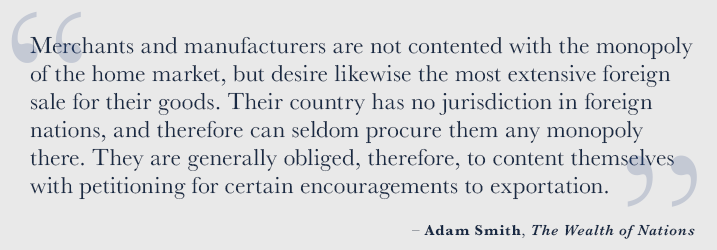On February 24, 2016, the president signed into law the Trade Facilitation and Trade Enforcement Act of 2015 (TFTEA). Among its key provisions is the very long awaited liberalization of the U.S. Drawback program. Although its official enactment will occur on Feb. 24, 2018 and the regulations governing the new program have yet to be written, summarized below are its key provisions along with commentary by yours truly:
Lawrence Tobia

Recent Posts
The “encouragements” that Adam Smith refers to are none other than Duty Drawback. In the United States, drawback has been a fixed part of trade policy since 1789 when the Founding Fathers understood that a thriving domestic economy required robust international trade.
By allowing exporters of products to draw back duty imposed upon its initial importation, it puts those exporters on an equal footing with their overseas competitors.
Simply put, better-priced products sell, well, better.
Topics: Duty Drawback, Export Consulting, North America
 The US government offers businesses the opportunity to recoup the duties they pay on imported goods that are taxed, subsequently exported, and taxed again. An astonishing estimate of $2.5 billion of those monies is unclaimed by businesses eligible for duty drawback.
The US government offers businesses the opportunity to recoup the duties they pay on imported goods that are taxed, subsequently exported, and taxed again. An astonishing estimate of $2.5 billion of those monies is unclaimed by businesses eligible for duty drawback.
The basics of a drawback program may appear straightforward, but the complexities of drawback reveal the true potential for significant duty recovery. It is worth taking the time to look when the payback has so much potential.
Topics: Duty Drawback





